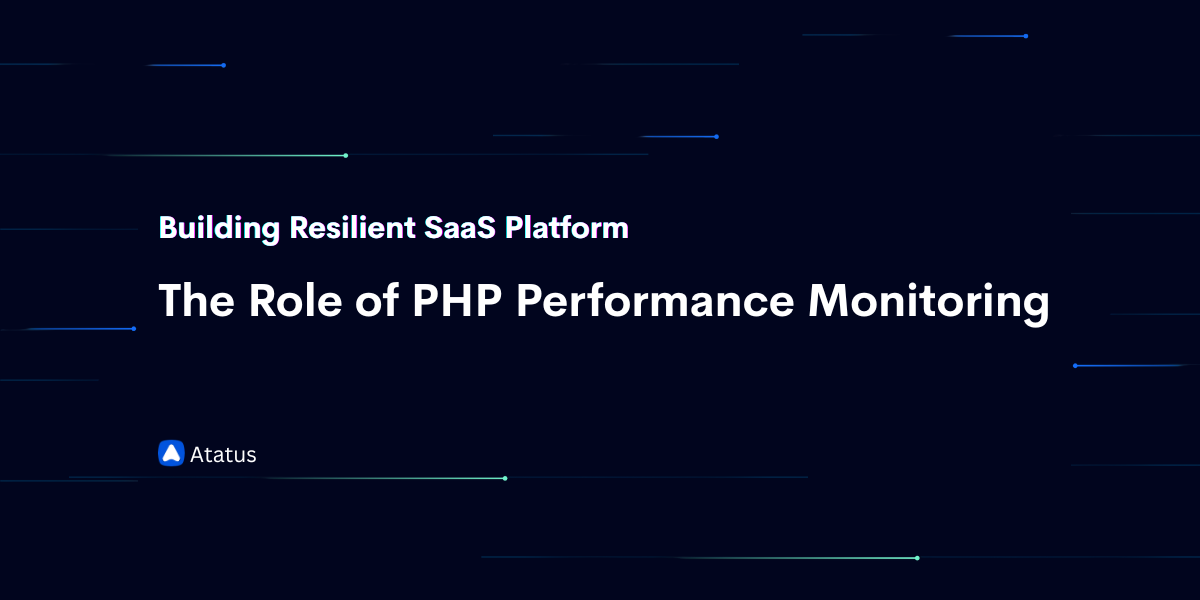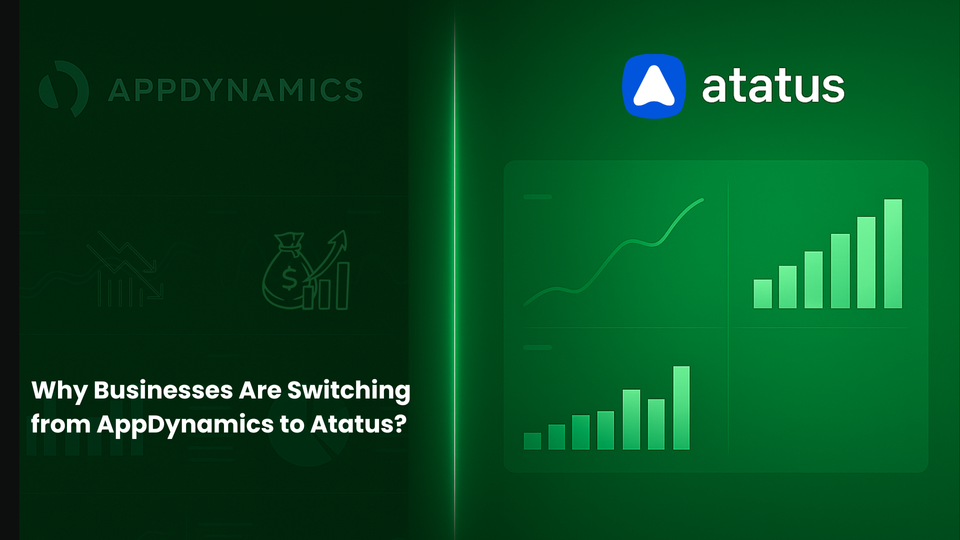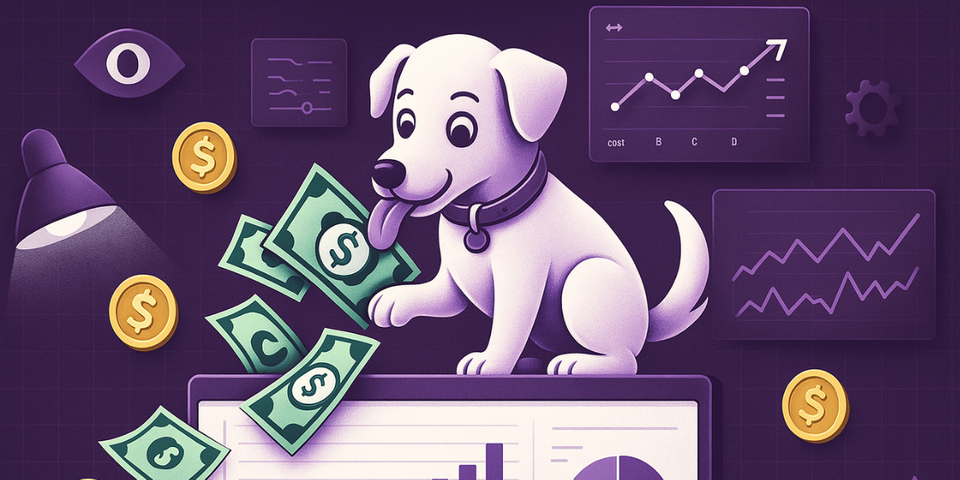Why SaaS Startups Need PHP Application Monitoring for Scalability
For SaaS startups, speed and reliability are everything. A few seconds of downtime or slow performance can turn away users, impact sign-ups, and directly affect revenue. Unlike traditional apps, SaaS platforms operate on an always-on model, which means performance and scalability must be built in from day one.
PHP remains one of the most popular choices for startups due to its flexibility, cost-effectiveness, and fast development cycle. Frameworks like Laravel, Symfony, and CodeIgniter make PHP ideal for building scalable SaaS products quickly. But without PHP application performance monitoring (APM), startups risk bottlenecks, slow queries, and hidden errors that can harm user experience.
This blog explains why PHP monitoring tools for startups are critical, the challenges SaaS teams face without them, and how monitoring ensures SaaS scalability from the very beginning.
In this Blog Post,
- Why SaaS Startups Need Monitoring?
- PHP in SaaS Development: Benefits and Challenges
- Challenges SaaS Startups Face Without PHP Monitoring
- How PHP Monitoring Ensures Scalability
- Best Practices for SaaS Startups Using PHP Monitoring Tools
- Real-World Scenario: Monitoring in Action
- Choosing the Right PHP Monitoring Tool for SaaS Startups
- Why Atatus PHP APM?
- FAQs
Why SaaS Startups Need Monitoring?
Startups often prioritise rapid product launches and new features, while performance monitoring gets pushed aside. But SaaS applications are unique:
- Always-on demand: Users expect 24/7 availability.
- Revenue impact: Every second of delay or downtime means losing customers and subscriptions.
- Competitive edge: Startups can’t afford poor user experience when customers can switch easily.
That’s why performance monitoring for SaaS applications should be part of the initial tech stack. It helps developers, DevOps engineers, and SREs spot issues before customers do, ensuring smooth adoption and retention.
💡 Also read →How to Reduce Application Downtime with APM?
PHP in SaaS Development: Benefits and Challenges
PHP powers many successful SaaS platforms due to:
- Rapid development frameworks (Laravel, Symfony).
- Large talent pool and lower development costs.
- Flexibility for integrating APIs, databases, and third-party services.
However, SaaS startups using PHP face challenges:
- Scalability issues with high concurrency.
- Database bottlenecks under heavy traffic.
- Memory leaks that degrade long-term performance.
- Error tracing difficulties in large distributed systems.
This is where PHP monitoring tools for startups provide visibility and control.
Challenges SaaS Startups Face Without PHP Monitoring
If a SaaS startup delays monitoring, it risks:
- Performance Bottlenecks – Slow queries or APIs remain hidden until traffic spikes.
- Infrastructure Overload – Servers crash under unexpected user growth.
- Delayed Error Detection – Bugs and exceptions only surface after customer complaints.
- Scalability Risks – Lack of insight makes scaling infrastructure guesswork.
- Poor Customer Experience – Users churn because apps feel unreliable.
Monitoring helps startups build stability early, instead of waiting until problems become too big and expensive to fix.
💡 Also read → How APM Can Improve Your Digital Customer Experience?
How PHP Monitoring Ensures Scalability
Here’s how PHP application monitoring for SaaS empowers startups:
- Real-Time Error Tracking: Catch exceptions and crashes instantly with stack traces. Developers don’t need to dig through logs, monitoring pinpoints the root cause.
- Database and Query Performance Monitoring: Databases are the backbone of SaaS. Monitoring helps identify slow queries, inefficient joins, and unoptimised indexes before they slow down the entire application.
- Infrastructure Health Monitoring: From CPU usage to memory consumption, monitoring ensures servers scale with demand. Cloud-native startups can align monitoring with auto-scaling strategies.
- Transaction Tracing & User Flow Analysis: Understand how users interact with your app. Tracing helps spot bottlenecks in sign-up, checkout, or API requests, ensuring smooth customer journeys.
- Alerting and Anomaly Detection: Set up alerts for unusual spikes in latency or errors. Instead of waiting for a support ticket, your team gets notified proactively.
In short, PHP APM for SaaS startups transforms scalability from a future problem into a built-in strength.
💡 Also read →What Makes PHP Application Monitoring Tools Essential for Leading Industries?
Best Practices for SaaS Startups Using PHP Monitoring Tools
To get the most out of monitoring:
- Define clear performance objectives – Set measurable goals for speed, errors, and resource usage.
- Identify key metrics – Track PHP-FPM, opcache, memory, database queries, latency, and errors.
- Streamline monitoring tools – Use a few comprehensive or well-integrated solutions.
- Prioritize user experience – Measure page load times, JavaScript errors, and real user performance.
- Invest in automation – Automate alerts, responses, and analysis for faster resolution.
- Implement continuous monitoring – Keep apps and infrastructure under constant watch.
- Test alerts regularly – Ensure notifications are timely and accurate.
- Monitor the monitoring system – Track the health of your observability tools.
- Assign incident response roles – Define clear ownership for handling alerts.
- Maintain consistency – Apply the same metrics across dev, staging, and production.
By following these best practices, startups ensure long-term SaaS scalability with PHP monitoring.
💡 Want to get the most out of your PHP monitoring? Read our guide on Best Practices for PHP Application Monitoring.
Real-World Scenario: Monitoring in Action
Imagine a SaaS startup offering an analytics dashboard. On launch day, everything works fine. But as users grow:
- Database queries slow down reporting.
- API integrations add latency.
- Random errors cause dashboard crashes.
Without monitoring, the startup can’t find problems quickly, customers get frustrated, and they start leaving. With PHP application monitoring, the team:
- Identifies the slowest queries.
- Traces transactions to bottlenecks.
- Fixes errors before users notice.
- Uses reports to plan scaling effectively.
The outcome? Better user experience, lower customer loss, and a scalable SaaS platform.
Choosing the Right PHP Monitoring Tool for SaaS Startups
Not all tools fit startups. Here is what to look for in PHP monitoring tools:
1. Application Complexity and Scale
Large, complex SaaS apps often require a full-featured APM tool with distributed tracing and deep code-level insights. Smaller apps may benefit from lightweight tools that focus on essential metrics.
2. Core Monitoring Capabilities
- Real-time Monitoring – Check if the tool provides live insights into performance and health.
- Alerting – Look for customizable alerts based on thresholds or anomalies.
- Dashboards & Visualization – Ensure data is clear, easy to analyze, and actionable.
- Error Tracking & Reporting – Verify that errors and exceptions are captured effectively.
- Code Profiling – Needed if you want to pinpoint bottlenecks at the code level.
- Real User Monitoring (RUM) – Essential if user experience is a priority.
3. Workflow Integration
Choose a tool that integrates smoothly with your development, DevOps, and CI/CD pipelines, reducing friction for your team.
4. Ease of Use
The interface should be intuitive and customisable, so you can adapt it to your application’s needs.
5. Budget Considerations
Evaluate whether the pricing of a monitoring tool aligns with your startup’s budget. While tools like Datadog and Dynatrace often come at a higher cost, Atatus delivers similar capabilities at a more affordable price.
Why Atatus PHP APM?
Atatus PHP APM offers a comprehensive solution for monitoring and optimising PHP application performance. Key reasons to choose Atatus include:
- Real-time Performance Insights: Atatus provides real-time visibility into your PHP application's performance, allowing you to identify and resolve issues quickly. This includes detailed information on transaction traces, database query performance, and external service interactions.
- Error and Bottleneck Identification:The platform helps pinpoint slow database queries, performance bottlenecks, and errors within your PHP applications, enabling faster resolution and improved responsiveness.
- End-to-End Tracing: Atatus allows you to visualise end-to-end traces across your application stack, ensuring you catch performance issues and errors before they impact users.
- Proactive Issue Detection and Alerts: It provides real-time alerts for performance degradations and critical issues, enabling immediate action to prevent downtime and optimise user experiences.
- Support for Startups: Atatus equips startups with the visibility and tools needed to keep PHP applications fast, reliable, and ready to scale as they grow.
- Customer Satisfaction: Our customers often highlight how easy Atatus is to integrate, how quickly it helps them identify issues, and how much they value our responsive support. You don’t have to just take our word for it, check out real customer reviews on G2: Atatus Reviews
Atatus offers detailed documentation and a 14-day free trial so you can explore all features now.
FAQs
Why should SaaS startups use PHP monitoring tools early?
Scalability problems compound over time if left unchecked. PHP monitoring helps startups catch slow queries, memory leaks, and hidden bottlenecks early. Monitoring from Day One reduces downtime, improves user trust, and ensures smooth growth.
How does PHP APM support DevOps and SREs in SaaS startups?
PHP APM provides real-time alerts, anomaly detection, and distributed tracing to identify root causes faster. DevOps and SRE teams can resolve issues proactively, reduce firefighting, and keep SaaS applications reliable for users.
Can startups afford PHP monitoring tools?
Yes. While tools like Datadog and Dynatrace can be costly, Atatus offers the same visibility at startup-friendly pricing. This gives SaaS teams powerful monitoring without overspending, making it ideal for early growth.
What performance issues can PHP monitoring detect in SaaS applications?
PHP monitoring tools spot slow database queries, inefficient code execution, memory leaks, and third-party API delays. These insights help startups maintain high app speed and prevent user drop-offs.
How does PHP monitoring improve customer experience?
By tracking real-user sessions and page load times, monitoring tools reveal how performance impacts users directly. Fixing slowdowns early ensures a smoother experience, reduces churn, and builds customer loyalty.
Is PHP monitoring only useful for large applications?
No. Even small SaaS apps benefit from monitoring because early detection of bottlenecks prevents bigger problems as the product scales. Monitoring ensures startups grow without performance setbacks.
How does PHP APM integrate into DevOps workflows?
Modern PHP APMs integrate with CI/CD pipelines, Slack, and alerting tools. This means DevOps engineers and SREs can catch issues during deployments, roll back faster, and maintain release velocity.
Does PHP monitoring help with scalability planning?
Yes. Monitoring provides metrics on traffic patterns, resource usage, and performance under load. These insights guide startups in scaling infrastructure efficiently without overspending.
How quickly can a startup see value from PHP monitoring?
Startups often see results within days. As soon as the tool is installed, they gain visibility into slow endpoints, error trends, and user experience metrics, leading to faster fixes and happier users.
#1 Solution for Logs, Traces & Metrics
APM
Kubernetes
Logs
Synthetics
RUM
Serverless
Security
More





